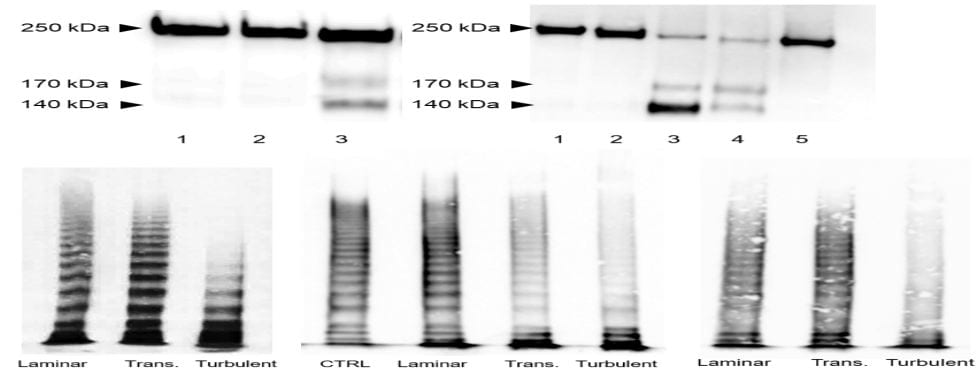Turbulent flow mediates VWF cleavage in the presence of ADAMTS13, decreasing the ability of VWF to sustain platelet adhesion.

Acquired von Willebrand syndrome is defined by excessive cleavage of the von Willebrand Factor (VWF) and is associated with impaired primary hemostasis and severe bleeding in patients with severe aortic stenosis an in patients undergoing procedures during extracorporeal circulation. It often develops when blood is exposed to nonphysiological flow such as in aortic stenosis or mechanical circulatory support. In collaboration with the Bark laboratory, we recently evaluated the role of laminar, transitional, and turbulent flow on VWF cleavage and the effects on VWF function. By using a vane rheometer to generate laminar, transitional, and turbulent flow we evaluated the effect of these flows on VWF cleavage in the presence of its main protease ADAMTS13 (figure 1). Computational fluid dynamics was used to estimate the flow fields and forces within the vane rheometer under each flow condition. We showed that turbulent flow is required for excessive cleavage of VWF in an ADAMTS13-dependent manner in reconstituted systems and whole blood. Importantly, our computational fluid dynamics results showed that under turbulent conditions, the Kolmogorov scale approaches the size of VWF (figure 2). Finally cleavage of VWF in these conditions had functional consequences under flow as the resulting VWF had decreased ability to bind platelets and collagen (figure 3). We continue these studies and we hope that these findings will impact the design of mechanical circulatory support devices.

